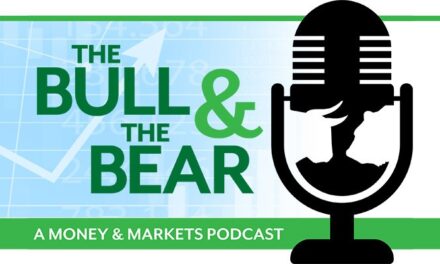Back in April, I explained when it makes sense to fund a Roth IRA or Roth 401(k) and when it makes sense to stay with the good, old-fashioned traditional IRA or 401(k). Spoiler alert: It mostly comes down to your income.
If you’re a high-income earner, the traditional option is usually best, as you get a tax break today, when you need it. The Roth is generally the better bet when your current income is more modest or when you’re specifically trying to avoid required minimum distributions. The beauty of the Roth is that you’ll never pay taxes on your distributions and that you can let the returns compound for the rest of your life.
At any rate, today we’re going to take this conversation a step further and focus on Roth conversion.
For the uninitiated, a Roth conversion is exactly what it sounds like. Rather than fund a Roth IRA with new money, you convert an existing traditional IRA into a Roth.
This is a very big deal for one reason: While the Roth IRA has income limits, a Roth conversion does not. In tax year 2020, your ability to contribute to a Roth IRA starts to get phased out at a Modified Adjusted Gross Income (MAGI) above $124,000 and is eliminated altogether at a MAGI of $139,000. If you’re married filing jointly, the phase-out starts at $196,000 and your ability to contribute is eliminated altogether at $206,000.
But while your cannot make a Roth contribution with an income above these levels, you can absolutely do a Roth conversion.
A Post-Covid-19 Roth Conversion
 Of course, the downside to doing a Roth conversion is that you essentially have to give back all of the tax breaks you’ve taken over the years in contributing to a traditional IRA. The entire balance you covert is subject to tax in the year you make the conversion. If you’ve amassed hundreds of thousands or even millions of dollars in your IRA over your career, that can amount to a nasty tax bill.
Of course, the downside to doing a Roth conversion is that you essentially have to give back all of the tax breaks you’ve taken over the years in contributing to a traditional IRA. The entire balance you covert is subject to tax in the year you make the conversion. If you’ve amassed hundreds of thousands or even millions of dollars in your IRA over your career, that can amount to a nasty tax bill.
But the beauty of a good crisis is that they can create opportunities. Let’s say that your portfolio is still depressed after the market declines this year. While the major stock indexes, led by large cap technology names, are close to new all-time highs, large swaths of the stock market are still deeply depressed. It could be that your traditional IRA account is still far below its pre-crisis highs.
Furthermore, it’s also not unlikely that your income has taken a hit this year or that your expenses have risen due to Covid-19 disruptions.
If you’ve had that perfect storm – a wrecked traditional IRA balance AND a hit to your income – then this might be the perfect time to do a Roth conversion. You’d need to be sure that you have cash available to pay the tax bill next year, which means you need to have substantial outside savings or be very confident that your income will bounce back in 2021. But this could very well be the best opportunity of your career to do a Roth conversion and capture the long-term benefits.
Rules to Remember
You’ll need to finish your Roth conversion by Dec. 31. IRA and Roth IRA contributions can be made any time up until the tax filing deadline (usually on or around April 15 of the following year). But conversions have to be done by Dec. 31.
It’s also important to remember that you can do a partial Roth conversion if you’re not quite ready to convert your entire balance. This doesn’t have to be an all-or-nothing endeavor.
2020 has been a rough year for most of us. But when we get lemons from the market, we can at least use the tax code to make lemonade.
• Money & Markets contributor Charles Sizemore specializes in income and retirement topics, and is a frequent guest on CNBC, Bloomberg and Fox Business.
Follow Charles on Twitter @CharlesSizemore.





